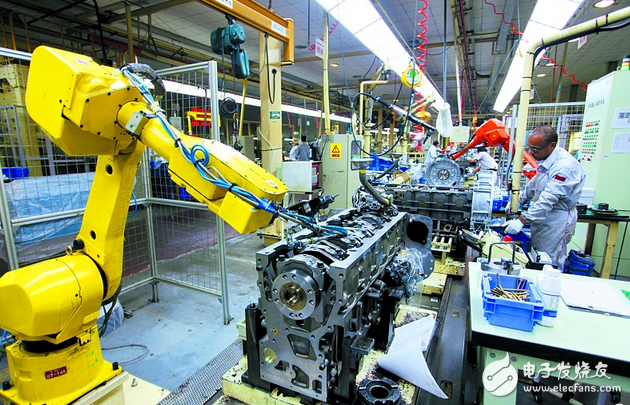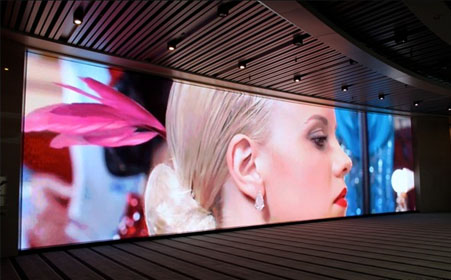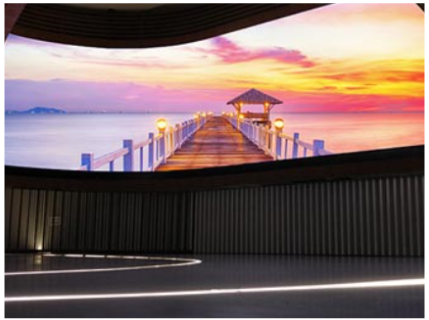China's three core component controllers, servo motors and reducers are the main bottlenecks restricting the Chinese robot industry, accounting for 70% of the cost of robots.
Controller
The controller has the smallest gap between home and abroad The controller is the brain of the robot, releasing and transmitting action instructions. Including hardware and software two parts: hardware is the industrial control board, including some main control unit, signal processing part and other circuits, domestic brands have mastered; software part is mainly control algorithm, secondary development, etc., domestic brands in stability, response There are still gaps in speed, ease of use, and so on.

The problem with controllers is that mature robot manufacturers generally develop controllers themselves to ensure stability and maintain the technical system because of their "neural center" status and relatively low threshold. Therefore, the market share of the controller is basically the same as that of the robot. Internationally, there are also vendors such as KEBA, Beckhoff, and B&R that provide the underlying platform for controllers. Therefore, in the current environment, domestic companies that develop controllers professionally will be more difficult.
The opportunity for controllers is standardization and openness. The existing closed structure of the robot controller brings disadvantages such as poor openness, poor software independence, poor fault tolerance, poor expandability, and lack of network functions, and can no longer meet the requirements of intelligence and flexibility. The development of modular, standardized robot controllers, open to users at all levels is a development direction of robot controllers. China's 863 plan has also been established. The unification of the robot interface is a general trend, and a platform-type enterprise that provides controller modules may appear in the future.
In terms of market size, according to the 13th Five-Year Plan to 2020, the number of robots in China will be 800,000 units. Assuming that domestic robots account for 50% of the total, the controller price is 15,000 yuan, and the replacement and maintenance are counted. The market size of domestic controllers is 60. - 7 billion yuan.
servo motor
The servo motor is highly competitive, and foreign capital has the right to speak. Servo motors are used as actuators in robots and are the main factors affecting the performance of robots. Servo motors are mainly divided into stepping, alternating current and direct current. The most widely used in the robot industry is AC servo, which accounts for about 65% of servo motors and controllers.
Foreign companies in the servo system have an absolute advantage. Japanese brands have monopolized the small and medium-sized OEM (equipment manufacturing) market with good product performance and competitive prices. In 2014, among the TOP15 manufacturers in the servo system market, the top three were Japanese brands with a total share of 45%. European brands such as Siemens, Bosch and Schneider occupy high-end, with an overall market share of around 30%. The overall share of domestic enterprises is less than 10%.
The self-supporting capability of China's servo system has taken shape. There are more than 20 large-scale servo brands. The power range of domestic products is more than 22KW, and the technical route is close to Japanese products. In terms of market size, in 2014, servo motors were 6.8 billion yuan in all application industries, with a growth rate of 8.3%; among them, robots grew at a rate of 50%, rapidly growing into the sixth-ranked industry in servo system applications, with 420 million Performance, accounting for 6.2% of the market.
In the space of growth, the servo motor as a whole is significantly affected by the macro economy, and will enter a stable development in the next five years. The proportion of multi-joint robots with 4-axis and 6-axis increases, which will bring about a high-speed growth of servos for robots. It is expected that during the 13th Five-Year Plan period, the proportion of robotic servo systems will rise to the first place with a market size of 1.6 billion yuan.
The controller and servo system are closely related. The user-selected order is reliable, stable, price, and service. Starting from service and cost performance is the direction of domestic enterprises. However, this requires long-term and in-depth research in the field of motion control, a large amount of capital investment and long-term market verification, and high requirements for technology, capital, and talents. Domestic listed companies such as Xinsong, Xinshida, Huichuan Technology, Guangzhou CNC Eston, etc. have similar conditions.
Reducer
The robot reducer market is highly monopolized, and the domestically produced reducer cannot achieve full import substitution during the popularization period. The reducer is used to precisely control the movement of the robot and transmit more torque. Divided into two types, the RV reducer installed in the heavy load position such as the base, the boom and the shoulder, and the harmonic reducer installed in the light load position such as the arm, wrist or hand. The RV reducer is monopolized by Nabtesco, Japan, and the harmonic reducer Japan Hamernaco has an absolute advantage.
The structure of the harmonic reducer is relatively simple. There are only three basic components, and the patent of Hamernaco has already expired. The difference between the domestic harmonic reducer and foreign countries is not large. Wuxi Green's harmonic reducer has been widely used in domestic robots.
The core difficulty of RV reducers lies in basic industries and processes. RV reducers are purely mechanical precision components, materials, heat treatment processes and high-precision machining machines are indispensable. China has long been lagging behind in these aspects, and it is not something that can be solved by a single enterprise alone. To combine more than 200 components, precision is demanding, and tolerance matching between components requires years of experience.
In terms of market size, according to the 2020 robotic capacity of 800,000 units, that is, an increase of about 600,000 units, a multi-joint industrial robot requires 4-6 speed reducers according to the number of axes, taking a median of 5, Then you need 3 million speed reducers. It is optimistic that domestic enterprises will get 50% of the market share. The calculation of a single reducer of 4,000 yuan will be 6 billion yuan, and the replacement demand will not exceed 7 billion yuan.
The price of the reducer is on a downward trend. Since Nabtesco's joint venture with Shanghai Electromechanical in 2013, the price of its RV reducer has gradually declined with the increasing production capacity of international robots in China and the development of domestic robots. When the Changzhou plant is put into production in 2016, there will be further room for decline. According to the 2015 annual report of Shanghai Electromechanical, Nabo reducer revenue was 134 million yuan, a year-on-year increase of 52.3%; net profit was 33.65 million yuan, a year-on-year increase of 55.5%.
In summary, the three core components of China's industrial robots need to pay more patience and input in order to achieve breakthroughs in essence, especially the speed reducer. The bigger the expectation, the greater the pressure, and the prospect is considerable. At the same time, China's industrial robotics talents are also very scarce.
Ultra Light less than 8kg for each LED panel.
Low Cost of Splicing
Standard 16:9 LED panel can also precisely achieve HD/FHD/UHD/SHV resolution just right, and with a 27" diagonal panel size it can become a perfect substitute for any existing 54" or 108" LCD screen.
Convenient Front/Rear Installation and Maintenance
The install procedure is as quick as block-building. It supports for both front and rear installation with a panel thickness of only 100mm. Additionally, module, power supply, receiving card, conversion card and cables between panels can all be maintained quickly from the front without professional skills.
Intelligent System
Calibration data retrieval function and worry-free parameter back-up function are both embedded in every smart LED Module. Besides, power system, temperature and other working status are automatically monitored to achieve intelligent management.
Less Is More
LED module, conversion card, and receiving card between panels are connected all through one connector of high stability. Thus, the panel presents a contracted and concise design style with no external cables.
Perfect Display Effect
160° ultra wide horizontal and vertical viewing angle covers more potential customers.
The broadcasting pictures are stable with no scanning line, and the edge of image is sharp and clear when dealing with dynamic pictures.
Stable Operation
JoyLED AC-DC and DC-DC power schemes are both available to ensure a safe and reliable operation of the LED screen. No sudden shut-down will occur during use.
Safe Operation
With hot double backup for Signal, stable broadcasting would be guaranteed when failure happens.
Anti-hacking Encryption could avoid malicious signal cut-off and input.


Fine Pitch Led Display,Led Digital Display,Outdoor Led Screen,Led Screen Display
Shenzhen Joy LED Display Co., Ltd. , https://www.joe-led.com